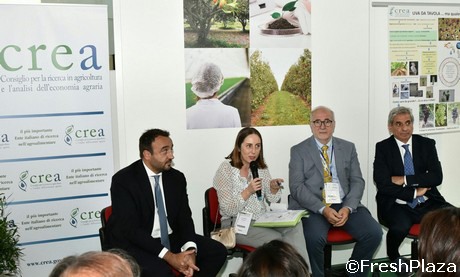
CREA talk show with Salvatore Parlato, Rossella Gigli, Donato Antonacci and Giacomo Suglia.
CREA's Extraordinary commissioner Salvatore Parlato, Centro viticoltura di Turi-Bari Director Donato Antonacci and APEO President Giacomo Suglia took part. Rossella Gigli from FreshPlaza was the moderator.
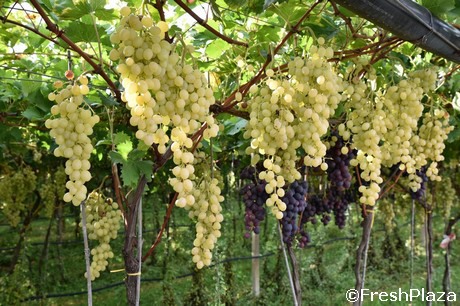
Advanced table seedless grape selection vineyard in Turi.
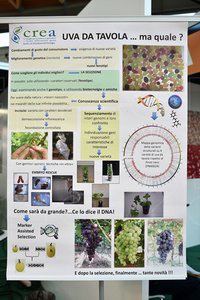 CREA has started working on new table grape varieties that are compatible with current commercial needs such as consumer preference, as well as with the production territory. They must also be resistant to phytosanitary problems and efficient from an agronomic point of view.
CREA has started working on new table grape varieties that are compatible with current commercial needs such as consumer preference, as well as with the production territory. They must also be resistant to phytosanitary problems and efficient from an agronomic point of view.Right: the poster presenting research on table grapes. Click here to enlarge.
As illustrated by Dr. Donato Antonacci, the Puglia table grape sector is now less competitive and has lost part of its market share as it is less diversified. Its forte has always been the Italia variety, which is seeded but has an excellent quality and taste.
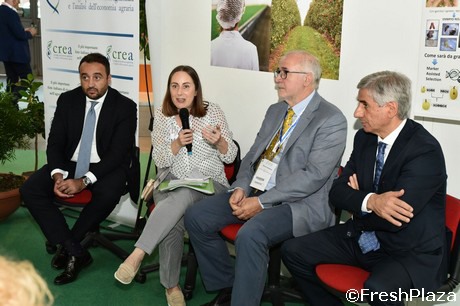
A moment during the talk show.
"Surveys conducted in the 1990s already showed how consumers liked seedless grapes. Unfortunately, not updating the varietal selection led to a loss in market share in the 2000s, especially abroad. Italian grapes lost 20% in Germany alone."
The answer to these problems can only come from research, which is developing new table grape selections.
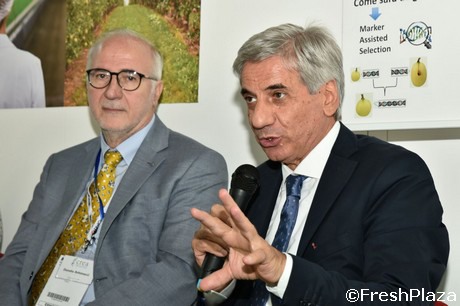
CREA Director Donato Antonacci and APEO President Giacomo Suglia
Giacomo Suglia stressed how the sector has been trying to recover, focusing on Italian varieties, "which does not mean abandoning seeded grapes, as they will always have a place on the market."
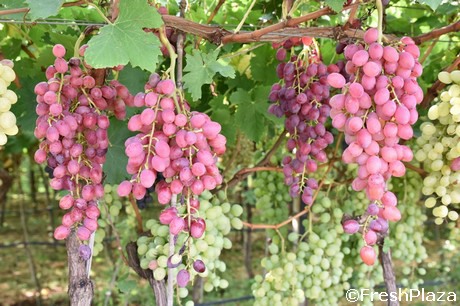
Seedless table grape selections in Turi.
As reported by Salvatore Parlato, what is currently being done in the table grape sector could be considered as a "pilot project" applicable to other sectors as well. "We are not imposing anything on producers, we are working with them to find ways to increase their profit. The idea is to start a co-patenting path."
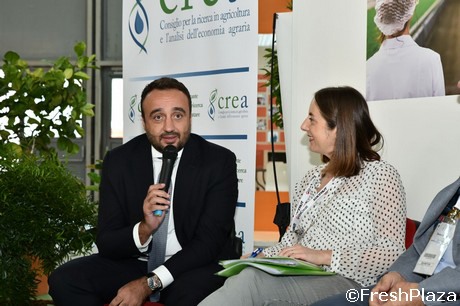
CREA Extraordinary commissioner Salvatore Parlato.
Antonacci added that "we are ready to deposit the first varieties and we want to do it together with the companies. This shared path will involve a first 4-year phase of varietal development, plus 2 years of commercial tests. The objective is to involve at least half of Puglia's producers."
Corrado Lamoglie, Director of the Technological Transfer department at CREA, highlighted the importance of the Joint Development Agreement to strengthen the relationship between private and public sector. "As we use public funding, we need our results to be useful to the public."
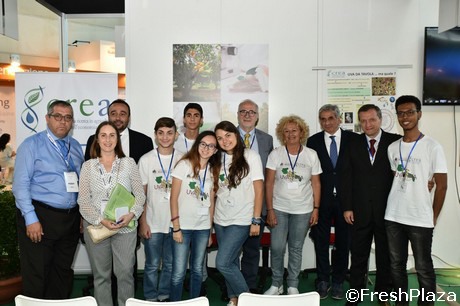
Group photo with students from the Uva Mia project. Students Giuseppe Longo, Francesca De Lauro, Claudia De Pascale, Ivan Marzolla and Ghirmay Asfaha were accompanied by professor Laura Persico.
5 of the 6 students from year 4 at the Liceo Scientifico Margherita Hack in Bari, also attended. They were rewarded by the Uva Mia project and could witness the various stages of table grape genetic improvement and also learn tasting techniques.










